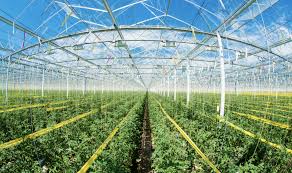Sustainable Development Goal (SDG) 6 on the agenda of the United Nations, which was adopted by all United Nations member, states: “Ensure availability and sustainable management of water and sanitation for all”. They planned this goal to be reached by 2030 (United Nations, 2019). Meanwhile, the agriculture business is using 70% of the water worldwide. Furthermore, it is responsible for a big part of the water pollution all around the world. Therefore, it is essential that the greenhouse horticulture business, as well as the agriculture business, is using water responsibly. By using Internet of Things (IoT)-devices a lot of data can be gathered about essentials processes in the greenhouse horticulture segment. By measuring the temperature, humidity and above all the watering, a lot can be done with regards to sustainable practices and even increasing the size and quality of the harvest. Nowadays, a lot of greenhouses, especially in the Netherlands, are implementing and improving technologies to collect and reuse water more efficiently (Glastuinbouw waterproof, 2018). A Wireless Sensor Network (WSN) combines batteries, sensors, software and 3G communication interfaces into a single network. This sophisticated soil remote sensor systems measure the amount of water and nutrition given to a certain crop and the greenhouse farmers are able to control the entire system via the platform (Pavithra, 2018). By creating a system that is based on IoT a platform can be build that gathers all the data from sensors, actuators and electronic circuitry within the greenhouses. This allows for making decisions based on real-time data about the circumstances in and around the greenhouses. Modern irrigation systems are able to suggest rescheduling the irrigation process by using rainfall water or soil water based on the current weather conditions (Carrasquilla-Batista et al., 2016). With the help of modern sensor technology farmers are able to optimize the water usage in greenhouses and using natural resources to reduce the ecological footprint. This might be a good step forward into reaching SDG 6.
Resources
Carrasquilla-Batista, A., Chacón-Rodríguez, A., & Solórzano-Quintana, M. (2016). Using IoT resources to enhance the accuracy of overdrain measurements in greenhouse horticulture. 2016 IEEE 36th Central American and Panama Convention (CONCAPAN XXXVI) (pp. 1-5). IEEE.
Glastuinbouw waterproof (2018). Wageningen Universiteit & Grodan over efficiënt watergebruik en afvalwatermanagement. Available at: https://www.glastuinbouwwaterproof.nl/nieuws/wageningen-universiteit-grodan-over-efficient-watergebruik-en-afvalwatermanagement/
Pavithra, G. (2018). Intelligent monitoring device for agricultural greenhouse using IOT. J. Agric. Sci. Food Res, 9, 220.
United Nations (2019). Sustainable development goal 6. Available at: https://sustainabledevelopment.un.org/sdg6


